Hoya flower: how to care for a beauty at home
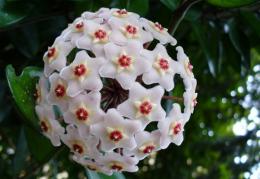
Flowering vine is an excellent choice for indoor vertical gardening. Hoya or wax ivy looks good in the modern interior of apartments and offices. The plant is unpretentious in care, but certain knowledge is required in order for the plant to grow and bloom well. Hoya is a flower that does not require a lot of attention. We will learn how to care for it from the article.
Content:
- Description of the plant
- Liana care and location selection
- Prepare the soil, water and feed
- Hoi transplantation and propagation
Description of the plant
Evergreen tropical plant of the Lastovnevy family. In indoor conditions, you can grow vines in the following forms:
- ampelous
- bush
- on a vertical support
The high plasticity of the plant allows it to be formed into decorative structures in the form of arches and other geometric shapes. Shoots can reach 7 meters. Over time, they become lignified, and antennae and aerial roots form on them.
Leaf shape: oval, heart-shaped. The color of most species is dark green, but there are varieties in which the leaf blades are covered with spots or specks. The leaves are leathery and arranged oppositely. The surface is shiny as if it had been rubbed with wax.
Small graceful flowers in the form of stars, collected in umbrella inflorescences, give the vine special beauty. They look like porcelain and are painted in delicate colors: white, creamy yellow, pink. The centers of contrasting colors give the flowers special expressiveness.
Liana care and location selection
For a novice gardener, it is easier to start with the Hoya fleshy variety. It is easier to care for vines of this variety. Hoya beautiful is a finicky plant and requires more attention. Long-term flowering and decorative appearance are achieved under the following conditions:
- right choice of place
- good priming
- timely irrigation
- feeding
Choosing a place
The plant does not like rearrangements: it can drop flowers, buds and even leaves. The place must be chosen correctly, so that the vine is comfortable both in winter and summer. Windows facing north provide little light, and the hoya may refuse to bloom. The south side is well lit, but in summer the leaves can get burned from direct sunlight. A pot with a flower should be placed at some distance from the window, or in light partial shade in the middle of the day.
It is best to have windows facing east or west. It must be remembered that hoya does not like rearrangements and drafts. Room temperature is important. Summer is the time when the vine is actively growing, forming buds, and blooming. The air at this time should be moderately humid. It is important to maintain the air temperature no higher than 25° C. Winter is a period of rest, 15° C is sufficient.
Prepare the soil, water and feed
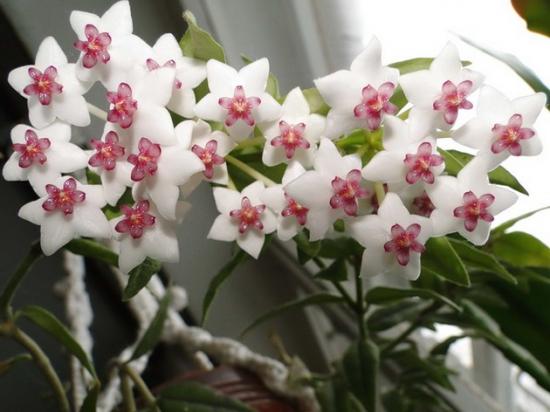
For landings you need soil with a pH of 6.4 - 7.3. Such acidity is found in turf, humus, and deciduous soils. To obtain optimal soil for the development of vines, you can take them in equal parts and add a little sand and compost. Many experienced gardeners recommend adding charcoal and large vermiculite. A layer of expanded clay (1.5-2 cm) must be poured onto the bottom of the planting container. If you buy soil in a store, then a substrate for violets (Saintpaulia) is suitable.
The vine does not like waterlogging.The frequency and volume of watering in summer and winter are different. In order for the formation of flowers to occur from spring to autumn, watering in winter must be minimized and the plant must be provided with a period of rest. In summer, when ivy is actively forming shoots and flowers, watering is needed, but moderate. There is no need to allow moisture to stagnate in the pot. The soil should be moderately moist.
In summer, in addition to watering at the root, it is necessary to moisten the leaves with a sprayer. Use water at room temperature and be careful not to get it on the flowers. The growing season begins in spring and ends in autumn.
All this time the plant needs to be watered with flowers. fertilizers. Frequency – once every two weeks. Water the plant the day before. Fertilizers containing nitrogen cause active shoot growth and reduce the number of inflorescences. It is convenient to use ready-made liquid fertilizers containing magnesium and phosphorus.
The most popular manufacturing companies:
Hoi transplantation and propagation
The plant does not need frequent transplants. Too large a pot size stimulates the growth of a large number of young shoots and slows down the formation of inflorescences. Replant no more than once every three years. The liana, with a large volume of above-ground green mass, has a small root system.
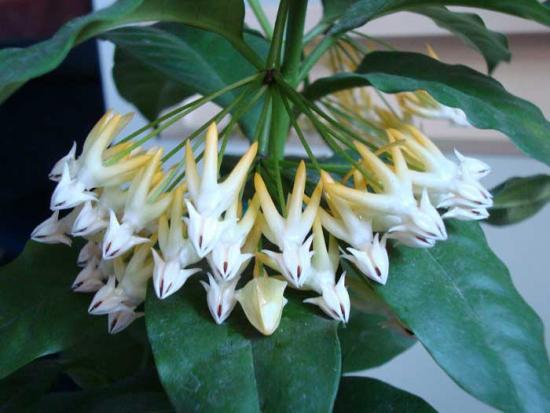
When replanting, you can take a pot with a slightly larger diameter. Replace the drainage with a new one, or rinse and boil the old one. Remove the top layer of soil (up to 2 cm) and sprinkle a little soil from below. Propagated throughout the growing season (May – September) in two ways:
- stem layering
- cuttings
Multiply cuttings are easier. The donor shoot must have at least 3 internodes. The age of the escape is 1 year. For rooting use:
- water
- sphagnum moss
- substrate
The substrate is prepared from 3 parts soil, 1 part perlite, 1 part expanded clay. The rooting process goes faster at a temperature of 22 ° C and the presence of a mini-greenhouse (jar, plastic bag). Plus, when propagated by layering, it blooms faster. On an adult branch you need to make an incision and wrap it with a layer of damp moss and a layer of polyethylene. Cut a branch from the mother plant after roots appear and plant it in a pot.
When caring for a vine, a few tips can be useful:
- If the leaves fall in winter, then most likely the roots are cold.
- Summer leaf fall - watered the plant with cold water in the heat or flooded it.
- Spots on the leaf blade indicate burns or little light.
- No flowers - wintered in a warm room or there is not enough light.
- The leaves have lost their brightness and are drying out - which means a lot of sun.
- The buds are falling off - dry air.
- Leaves become smaller and grow slowly shoots – lack of nutrients.
- The beautiful Khoya will decorate any room if you care for it with love.
Video about how Hoya blooms:

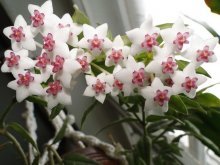
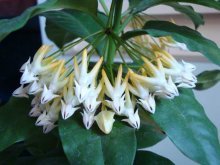
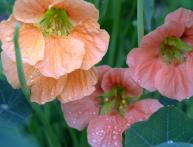
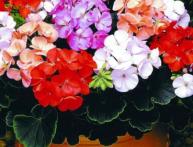
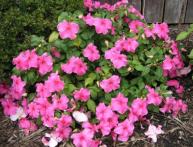
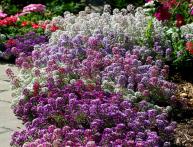
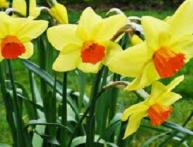


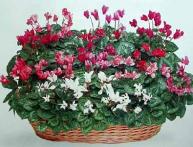
Comments
Our hoya stood in the bedroom for a while, or rather hung in a flower pot, but then it “moved” to the kitchen. It certainly blooms beautifully, but the smell is simply terrible, strong, especially at night.
My mother was given a Hoya. It seemed to us that it was a very capricious plant. At first the leaves began to dry, we didn’t understand why. We read in the book that the flower was lacking, we watered it with fertilizers, but it didn’t help. As a result, it withered completely. It was a great pity, it is a beautiful flower, but its smell is not very pleasant.
And we have hoya growing at work, ampelous. The pot sits on top of the closet and does not require any special attention or care. We water regularly, trying not to overwater.We don’t see any dry leaves, it blooms as expected and makes us happy.